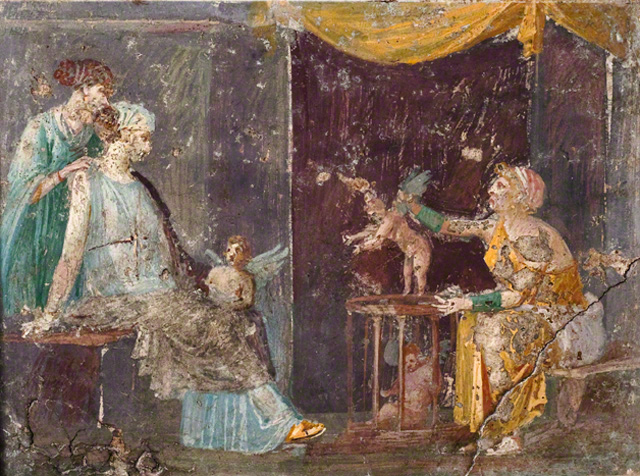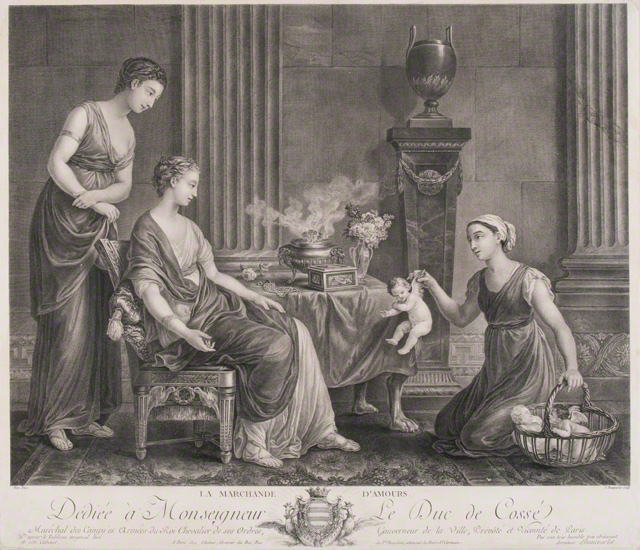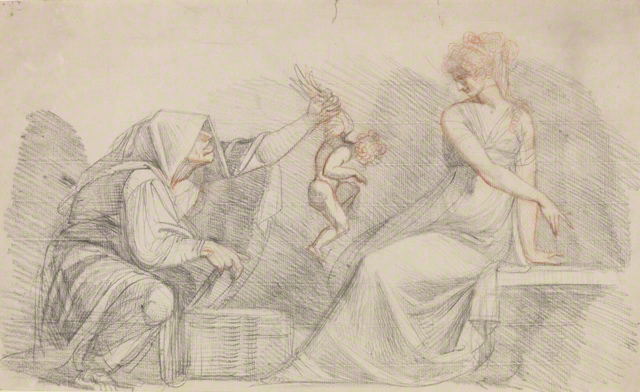The Cupid Sellers
The notion of capturing or purchasing love through "Cupid sellers" was popular in ancient Roman literature. It captivated the imagination of modern artists with its suggestion of Pompeian decadence.
An Ancient Fresco
Cut from the wall of the luxurious Villa di Arianna at Stabiae, a coastal town south of Pompeii, this fresco depicts an older woman forcefully lifting a winged Cupid from a cage and offering it to a potential buyer. Since its discovery in the mid–1700s, this fresco has inspired numerous reproductions and adaptations in diverse media.
An 18th-Century Re-Creation
One of the earliest and most influential reimaginings of the Roman fresco shown above was Joseph-Marie Vien's 1763 Cupid Seller, reproduced in this engraving by Jacques Firmin Beauvarlet. It was not a copy but rather a re-creation intended to update the ancient original for the taste of 18th-century Paris. The setting gives an impression of a Neoclassical salon, and the figures adopt contemporary poses and gestures—the Cupid's is clearly obscene. Engravings of Vien's work were widely distributed, inspiring a cottage industry of imitations in other media, from luxury items to common household goods.
Love as a Sinister Affair
In 1775, Johann Heinrich Fuseli traveled to Naples, where he may have seen the original fresco that inspired this drawing. He was involved in a series of unhappy relationships at the time, which could have influenced his interpretation of the subject. His depiction is more sinister than either the ancient original or other modern versions, such as Joseph-Marie Vien's. Taking ample liberties, Fuseli drew a disturbing scene in which a crone thrusts a limp Cupid toward a recoiling maiden. Here, love is not a courtly pleasure but rather a dark, frightening affair with an uncertain outcome.
Publication
The Last Days of Pompeii: Decadence, Apocalypse, Resurrection
By Victoria C. Gardner Coates, Kenneth Lapatin, and Jon L. Seydl
By Victoria C. Gardner Coates, Kenneth Lapatin, and Jon L. Seydl

